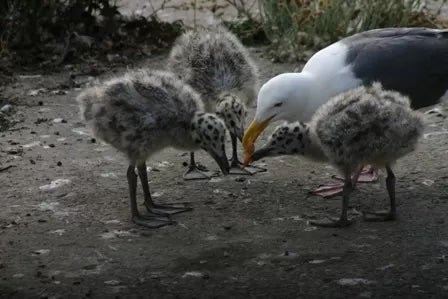ARTICLE AD BOX
President Donald Trump has announced his intention to reopen San Francisco Bay Area’s notorious Alcatraz prison.
"It sorta represents something that's both horrible and beautiful and strong and miserable, weak — it's got a lot of qualities that are interesting,” he told reporters Monday.
Once one of the worst prisons in the U.S., the facility has been closed since the early 1960s. About a decade later, the island and prison were added to the Golden Gate National Recreation Area managed by the National Park Service and opened to the public as a historical landmark the following year before the We Hold the Rock protests.
Now, Trump says it’s time to rebuild and lock up “serial offenders” on the rock island.
He directed the Department of Justice, the FBI, and the Department of Homeland Security to reopen a “substantially enlarged and rebuilt” Alcatraz “to house America’s “most ruthless and violent offenders.”
While the prison hasn’t housed inmates for years, Alcatraz Island has been a home to thousands of nesting birds for even longer. It’s in the name: “Isle de los Alcatraces,” or “Island of the Seabirds.”

After the winding down of widespread overhunting at the beginning of the 20th century, populations have flourished there. Alcatraz is particularly suited for the birds, as it’s rocky, isolated from the mainland, and its surrounding waters are an abundant food source.
There are black-crowned night herons near the cell house, western gulls at the parade ground, there are pigeon guillemots around the island’s perimeter, and Brandt’s cormorants along its banks. Snowy egrets, California gulls, pelagic cormorants, and peregrine falcons are also found there.
From February to September, parts of the island are closed to the public to allow the breeding birds to nest.

In February, western gulls raise their young below the Alcatraz lighthouse, and gulls build more than 500 nests there every year.
In April and May, the black-crowned night herons and snowy egrets construct their nests in shrubs, trees, and bushes. Seeing the Brandt’s cormorant — which spends most of its life far out to sea — is the real prize. As many as 2,000 pairs nest on Alcatraz every spring.
Seabirds help us monitor marine ecosystems, contribute to the habita for other species, and bring important marine nutrients to islands.
Even without the risk of this critical habitat being upended, the birds are already threatened. Climate change is changing ocean circulation patterns and leading to disturbances in their food supply, according to the National Park Service, including anchovy fish.
"The food in the Bay Area is more stable than it would be out in the open ocean," Golden Gate National Recreation Area biologist Morgan Barnes told CBS News Bay Area. "Freshwater inputs into the bay will create a more stable food source."

Recent data also shows marine heatwaves and climate patterns, in addition to rising sea levels, are affecting these birds.
In the absence of ensuring the protection of the winged residents of Alcatraz, the future remains bleak as humans continue to produce greenhouse gas emissions that turn up the heat. Protecting them now could be key to ensuring the survival of these species.
“It's a completely inappropriate location for a maximum security prison,” Golden Gate Bird Alliance Executive Director Glenn Phillips said in an email to The Independent. “Golden Gate National Recreation Area is a congressionally designated National Park, and it would take an act of Congress to change that.”









 English (US) ·
English (US) ·